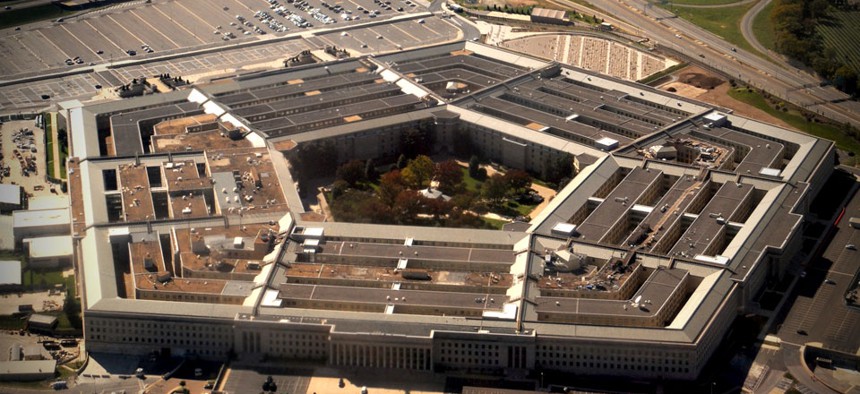Pentagon Needs to Build Cybersecurity into the Acquisition Process

Frontpage/Shutterstock.com
The Defense Department needs to turn its focus to the protection of battlefield systems.
If you were asked to name one of the most pressing issues facing the Pentagon in the next five years, chances are you wouldn’t specify the intersection of cybersecurity, acquisition and the sometimes small but always vital electronic components that make up battlefield systems.
At the confluence of these three, however, lies a serious vulnerability.
Granted, talk of acquisition and components -- not to mention cybersecurity -- may be enough to make most people’s eyes glaze over. But don’t let the nomenclature fool you: This issue warrants our attention and, more important, action.
While the devil is in the details, and they are admittedly complex, the gist of the issue is simple: Our weapons platforms and systems are subject to potential compromise if we fail to secure them.
And unless and until we embed cybersecurity into system architecture and design, we are handing our adversaries -- who are many and varied -- an advantage that they have not earned.
From nation-states to terrorists and criminals, the list of actors who may wish to do us harm is long. The methods and means at their disposal for that purpose include remote exploitation of supply chain and manufacturing in order to gain control of U.S. systems.
The motivation is to stymie us by stealing and studying our designs for next-generation aircraft, satellites and so on, in order to determine the most effective way to attack them, cyberwise.
Makes sense from their perspective. Gaining access to U.S. plans through economic espionage also helps our opponents identify vulnerabilities that can be exploited by conventional means, saves our adversaries money and effort that would otherwise be spent on developing their own weapons and countermeasures and hurts the U.S. economy.
The Defense Department has built up a wealth of cybersecurity expertise when it comes to protecting computer networks. The department now needs to turn its focus to the protection of battlefield systems.
DOD Already Taking Steps to Secure Supply Chain
While there is no getting around the fact that we are reliant upon hundreds of suppliers for our software-intensive and networked systems, it is crucial to maintain confidence in U.S. defense systems -- which means minimizing remote-exploit opportunities that may reside in manufacturing and supply chains.
In terms of getting us to that goal, various departmental instructions for securing components already exist.
DOD’s broad strategy for Trusted Systems and Networks includes instructions for ensuring the cybersecurity of acquired electronic components. This includes vulnerability analysis, intelligence to inform the risk management process and countermeasures such as secure design patterns. A recent Defense Federal Acquisition Regulation Supplement rule on the detection and avoidance of counterfeit electronic parts is also a solid step in the right direction.
But as always, the rubber will meet the road primarily in the implementation phase of these and other measures. Our systems -- taken collectively -- must be architected to prevent and detect cyberattacks more broadly.
3 Steps DOD Needs to Take
The power to meet these cybersecurity challenges lies in the acquisition community, particularly by partnering with industry to build the necessary protections for mission-critical elements. While there is no silver-bullet solution, three steps could move us forward significantly.
- Educate. Raise the level of awareness about the urgency of this challenge through workforce training. Reach back into colleges as well to build a foundation for the future by emphasizing topics like secure architecture and secure coding.
- Evangelize. To create a culture of cybersecurity that truly permeates, sustained leadership is required. Silicon Valley pioneered the concept of the “chief evangelist,” and we would do well as a nation to take a page from that playbook.
- Engineer. Analysis of security requirements and building the architecture to meet them must become an integral part of the design process. Intrusion detection systems, for instance, should be incorporated at the front end. More broadly, the act of engineering should be conceived and undertaken as (among other things) an exercise in creativity and design, with security top of mind rather than an afterthought.
When it comes to the possibility of a cyber incident, even for the Pentagon, it is question of when -- not if. The most prudent course, therefore, is to commit to building resilience and maintaining functionality even if attacked.
In part, this means bettering our understanding of coming threats, so we can figure out how best to manage and mitigate risk. For the Defense Department, this should include an internal review of critical weapons systems and their cybersecurity effectiveness.
Analyze Trade-offs Between Security and Capability
Another valuable exercise for DOD would be an analysis of the trade-offs between security and capability. This could be designed and conducted by the Defense Science Board with the goal of mapping out how to measure the balance between the two.
Done right, such a study would enable the integration of cybersecurity policy into the acquisition process, in a scientific manner that eliminates guesswork.
The voluntary standards and best practices contained in the National Institute of Standards and Technology cybersecurity framework also represent a good step forward, and adopting them would communicate to the acquisition community the criticality of security controls.
The bottom line, however, is that education and culture change take time.
With dedicated effort, however, engineering secure technologies and systems and acquiring and adopting them in a manner that reflects a careful appreciation of risk-based cyber considerations, may come to be seen as a “cool” thing to do.
The faster we get to that stage, the better for the country.
Michael L. Papay is Northrop Grumman’s vice president and chief information security officer. Frank J. Cilluffo is director of the George Washington University Cybersecurity Initiative and the Homeland Security Policy Institute. Sharon L. Cardash is associate director of HSPI and a founding member of GW’s Cyber Center for National & Economic Security.
(Image via Frontpage/Shutterstock.com)


